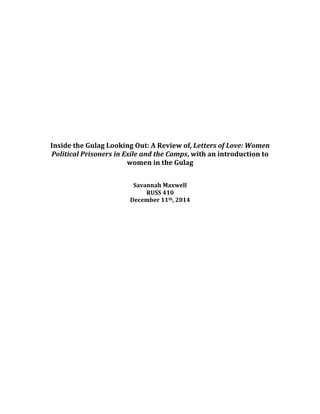This document provides an introduction to women in the Gulag system during Soviet rule. It discusses how women formed strong support systems with each other to survive the difficult conditions. While some women had relationships with higher-status men in the camps and received better treatment, most women faced the same harsh conditions as men, including meager food rations and poor living quarters. However, women generally had greater survival skills than men, such as mending clothes, and were able to support each other emotionally through shared hardships.













